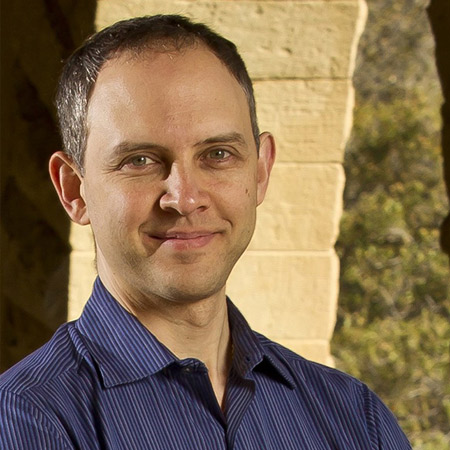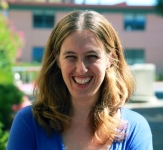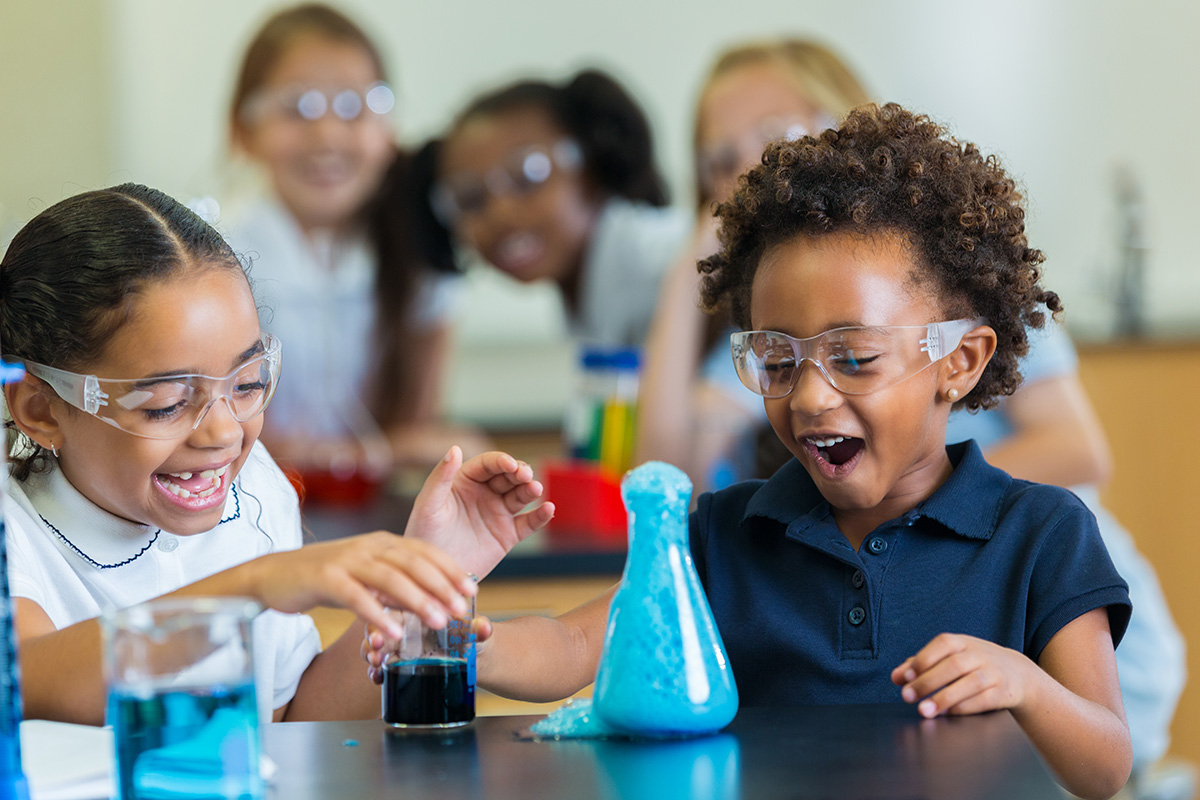The Next Generation Science Standards (NGSS), introduced in 2013, were hailed for their potential to transform K-12 students into “mini-scientists” who could learn core concepts by forming and testing their own hypotheses about how the laws of nature work.
But the standards have proven difficult to practice in actual classrooms, in part because a key way that students are supposed to fulfill that vision is through computational and mathematical modeling — the creation and use of computer simulations that allow them to see their own ideas in action.
“The idea is that students should not just take natural laws as set in stone, but create their own laws, testing them, doing what-if scenarios,” says Paulo Blikstein, Associate Professor of Learning Technology Design, and Director of Teachers College’s Transformative Learning Technologies Lab (TLT Lab). “So, with a chemical reaction, you don’t just teach them the formula for what’s going on. Instead, they create their own simulation of how they think a reaction works — do atoms move in circles? Or randomly? Do they collide and bond or just blow up and disappear? — and then through testing, sharing, and conversation with peers, they likely converge toward the accepted theory. And in that process, they can bring real world knowledge they already have.”

ALLOWING FOR THE WHAT-IF Blikstein has spent his career creating technologies that allow children to explore. (Photo: TC Archives)
It’s a great approach, Blikstein says, “but the problem is that the tools for computational modeling aren’t user friendly enough. Few tools right now are really manageable by the teacher or practical within the constraints of the classroom. So what’s happening instead is that many teachers are just saying, ‘OK, to fulfill that requirement, I’ll show a ready-made animation, have kids play with it for half an hour and we’re done.’”
Now a team led by Blikstein, whose FabLearn program has brought digital fabrication and maker education to schools in more than 22 countries, has received a three-year, $2 million grant from the National Science Foundation to develop and research a new “technological ecosystem” that will enable students to create, test and compare their own ideas about science.
The effort, which will build on a decade of work by Blikstein in this area, will include co-design with classroom teachers to develop accompanying science learning units, and subsequent research to determine whether students are learning more using the new technology and curricula.
[Blikstein has put out a call for applications for a third cohort of FabLearn Fellows (see below).]
The funding — a Level 2 grant from NSF’s DRK-12 Program, which is one of the most important for STEM research at the agency — is focused on sixth- and seventh-grade science, but the results will be adaptable to other age groups, including high school students.
“You don’t become a good reader if you only read books 30 minutes a month,” says Tamar Fuhrmann, a co-Principal Investigator on the project and Senior Research Scientist working within TC’s TLT Lab. “One of our main points is that kids should have sustained exposure to modeling tools to build real fluency. These inquiry practices should not be once-a-year experiences, but instead, 20-30 percent of the science hours in a given grade.”
The big point is to have kids doing more real science in classrooms. Not just hearing about or replicating what Newton or Darwin did, but instead, being Newton or Darwin in the sense of proposing, testing, and refining their own laws of nature.
—Paulo Blikstein
“Ultimately, the big point is to have kids doing more real science in classrooms,” Blikstein adds. “Not just hearing about or replicating what Newton or Darwin did, but instead, being Newton or Darwin in the sense of proposing, testing, and refining their own laws of nature.”
There are currently available learning environments that allow youngsters to change variables in natural phenomena — for example, the number of atoms in a chemical reaction, or the temperature that is causing the molecules to move and collide — and then watch simulations of how those phenomena are altered.

ALL ABOUT FLUENCY: Fuhrmann says that, as with reading, kids need regular exposure to computer modeling.
“Often people call this interactive or active learning, but the space for students to change things is in fact very small,” Fuhrmann says. “In these programs, the laws of nature are already embedded — you don’t get to look under the hood to see what makes things go.”
Blikstein team’s approach focuses on creating an easy-to-learn computational environment that will allow children not only to create their own simulations, but also validate them:
“In addition to the programming, we’ll develop low-cost sensors that will enable you to check your simulated outcomes against an actual experiment in a real wet lab, side-by-side, in real time,” Blikstein says.
Kids should have sustained exposure to modeling tools to build real fluency. These inquiry practices should not be once-a-year experiences, but instead, 20-30 percent of the science hours in a given grade.
—Tamar Fuhrmann
Blikstein and Fuhrmann, whose collaborators are Michelle Wilkerson, Assistant Professor in the Graduate School of Education at the University of California-Berkeley, and Aditi Wagh, a research scientist, at the Massachusetts Institute of Technology, emphasize that the new tools they will be creating will not only be appropriate for classrooms, but also for use in remote environments.
“We wrote our proposal long before the COVID pandemic hit, but together with my former doctoral student Engin Bumbacher, we have been working on remote wet-lab technologies for years,” Blikstein says. “These tools won’t be a complete replacement for being in school or in the lab, but they will definitely enable students to do actual experiments at home, either with low-cost materials, or accessing a remote microscope. Imagine if instead of spending hours on social media, kids start using their phones to run remote experiments and build scientific models? It will definitely beat watching a Zoom lecture, and that’s good news for teachers who are desperately searching for alternatives to standing in front of a camera.”
A Call for “Maker” Fellows at TC, focused on “Cultural Making”
The FabLearn Program and the Transformative Learning Technologies Lab (TLT Lab), both directed by Paulo Blikstein at Teachers College in New York City, have opened applications for the third cohort of FabLearn Fellows. The application deadline is September 13th, 2020.
FabLearn Fellows are educators in formal, informal, or alternative learning environments who are “pioneers in generating ideas, best practices, and open-source resources for makerspaces, fab labs, and other spaces for creative educational work.” The FabLearn Fellows are also “global ambassadors communicating the value of constructionist learning, culturally-aware pedagogies, educational equity, and diversity.”
The theme for the new call for FabLearn Fellows is “Cultural Making.”
“We want to engage diverse educators from all over the world in documenting ways that maker education is happening around the planet,” says Blikstein, Associate Professor of Learning Technology Design. “We are interested in how local ideas, culture, and practices are both inspiring and being inspired by maker education, and how we can build a more diverse and meaningful movement, inspired by non-U.S. constructivist education scholars such as Paulo Freire, Ubiratan D’Ambrosio, and Terezinha Nunes.
The 2020 cohort of FabLearn Fellows will produce an edited book, to be titled “Cultural Making Around the World,” that will provide “a comprehensive, global portrait of making practices using high-, low-, or no tech.”
“We want to document and tell the stories of people using traditional digital fabrication but also alternative materials, such as recycled electronics, low-cost robotics, eco-friendly materials, bioplastics, clay, wood, natural fibers, and traditional textiles,” Blikstein says. “We are also interested in how educators from around the world are adapting their maker-inspired activities to the new COVID-19 scenarios.
Those selected as FabLearn Fellows make a 24-month commitment (from October 2020 through September 2022) to provide teachers and educators with the resources to turn their own successful education activities and experiences in makerspaces into shareable, open-source educational materials. This program targets educators who are either actively using or building makerspaces or fab labs, or who work in any alternative spaces in which children engage with the creation of objects -- even if they do not have digital fabrication technologies.
Learn more at https://fablearn.org/fellows/2020-announcement/ or by reading about the FabLearn Fellows Program. For questions, email info@fablearn.net
